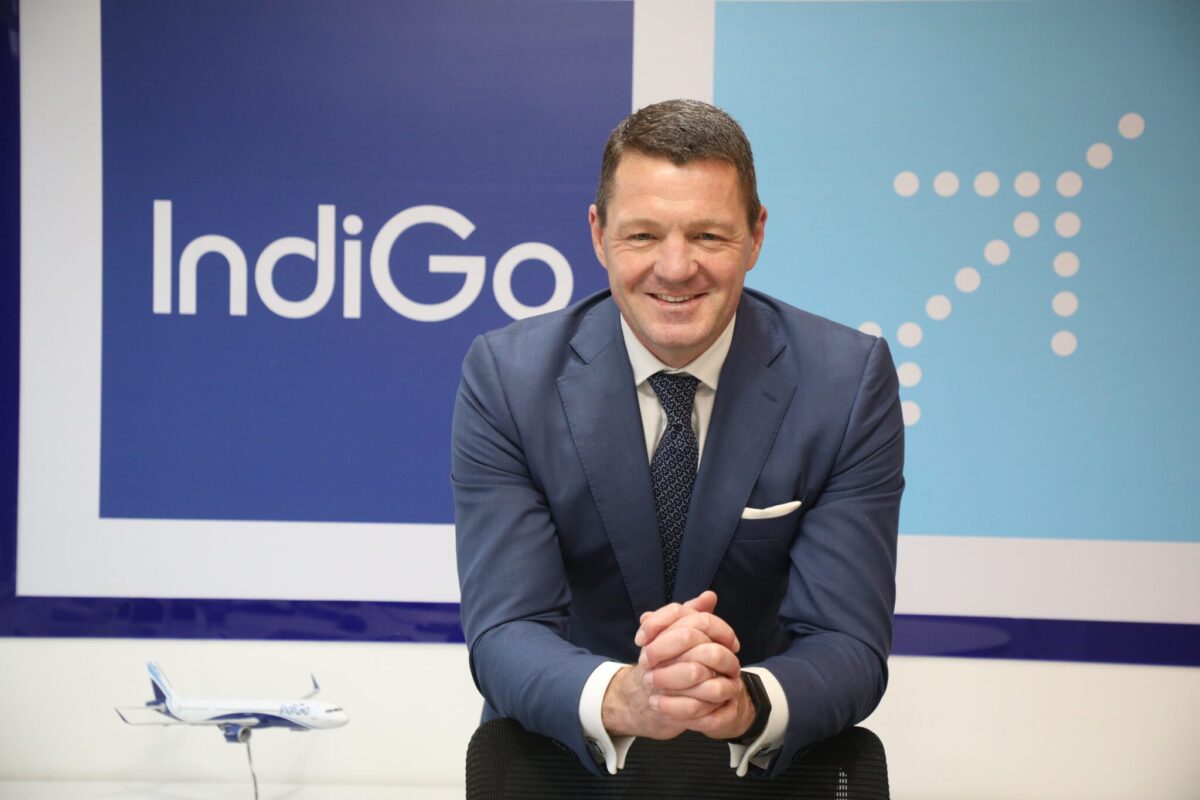Skift Take
Recognizing Indian low-cost carrier Indigo's achievement of flying 86 million passengers in 2023 fiscal, CEO Pieter Elbers acknowledges that customer choice plays a vital role in achieving such remarkable numbers. No wonder, Indigo thinks it's now time to implement a loyalty program to help attract and retain customers.
An airline does not have 86 million passengers by chance — these customers have to choose you, according to Pieter Elbers, CEO of Indian low-cost carrier Indigo.
One item Elbers is considering to keep passengers flying with Indigo: An enhanced loyalty program.
“Around 10 years ago, the Indian market was probably less ready for a loyalty system, but today it’s definitely ready and that has made us review our position,” Elbers told Skift recently during an interview in the Indian capital city of Delhi.
“The exact details are yet to be determined. Given our diverse customer base, we must carefully consider the best approach,” Elbers said.
In 2019, Indigo had introduced the Ka-Ching card, with more of a cashback system, which Elbers called a form of loyalty but without the classical tiers.
International Expansion and The Order of XLRs
The airline recently reported its highest-ever annual revenue, at $6.8 billion, and best-ever quarterly profit . It flew 86 million passengers, a 72 percent jump from last year.
Now it has plans to grow its international operations: After all, Indigo is the sixth-largest carrier in the world by market size, but has a low presence in other regions.
The airline serves 78 domestic and 26 international destinations. Around 90 percent of its passengers consists of domestic travelers.
Elbers acknowledged that Indigo needs to work on brand awareness. “Outside the scope of our present range aircrafts, we’re not very well known,” he said.
The airline though is experimenting with new routes and wants to start flights into Nairobi, Jakarta and Central Asia with its existing fleet.
And then of course, there is the order of the Airbus A321 XLR (extra long range). Indigo expects to take the delivery of its very first XLR around 2024-2025, even as Elbers said the airline hasn’t taken a final decision on where to fly next with the XLRs.
“One of the charms of the Indian market, is that it is a very late booking market and people are open to new routes and new developments. Contrary to some parts of the world, there’s no need to announce new routes a year prior,” said Elbers.
Defining the strategy for internationalization, Elbers said the airline is focused on building its own network and also working through codeshare partnerships.
Indigo currently has codeshare agreements with seven foreign carriers — Air France, KLM, Virgin Atlantic, Qatar Airways, Turkish Airlines, American Airlines and Qantas.
The Codeshare With Turkish and Possible U.S. Connection
Despite its current fleet size of 307 aircraft, the airline has a substantial order book of around 500 planes. However, it also faces supply chain challenges.
As a result, Indigo has now extended some of its leases and has looked for more creative solutions.
For example, Indigo connects 33 destinations in Europe offered by a code share with Turkish Airlines, in which travelers fly on an Indigo wide-bodied aircraft from India to Istanbul and then onwards via Turkish Airlines.
Its’ the first time Indigo has started codesharing on another carrier from another carrier’s hub.
As part of that arrangement, Elbers said the airline is also working on getting approval to fly to some destinations in the U.S.
Alliances? Not Yet. Partnerships? Yes, Please!
Prior to joining Indigo in September 2022, Elbers had been the president and CEO of KLM for eight years.
Despite coming from a world of alliances, Elbers said the airline currently has no plans to join one, though it has formed partnerships with airlines from various alliances, which is noteworthy.
While Elbers stated that the airline does not have immediate plans to join alliances, Indigo remains open to the possibility of adding more partners in the future.
Air India Merger and The Indian Aviation Market
Elbers is mindful of the great merging that’s happening in Indian aviation where the four Tata Group-owned airlines will be consolidating to form one full-service carrier and one low-cost carrier.
But he thinks there’s plenty of room for multiple carriers in India. “I’m very confident about the strength and the proposition in operating in these markets. India as an aviation market does not only have a relatively low penetration, but also is in somewhat a nascent stage,” he said.
As Elbers points out, what’s happening today in India in terms of consolidation has happened earlier in the U.S. and Europe.
Indigo has been instrumental in stimulating the market and creating new opportunities, said Elbers. “Through its efforts, the airline has successfully generated demand in smaller cities that previously had limited air connectivity, effectively expanding and shaping the markets.”
In addition to the major metropolitan cities, there is untapped potential of tier two and tier three cities in the Indian market. Previously, residents of these smaller cities had limited access to air travel opportunities.
“As I travel to smaller cities and navigate through the aircraft, I encounter a diverse Indian audience aboard that Indigo plane. I witness first-time fliers, senior citizens embarking on a holiday with their children for the first time, young individuals engrossed in their work on laptops, and families traveling together.”
Skift India Report
The Skift India Report is your go-to newsletter for all news related to travel, tourism, airlines, and hospitality in India.
Have a confidential tip for Skift? Get in touch
Tags: air india, alliances, asia monthly, aviation, coronavirus recovery, india, indian airlines, indigo, klm, loyalty, supply chains, turkish airlines
Photo credit: Pieter Elbers, CEO of Indian low-cost carrier Indigo. Source: Indigo Indigo
